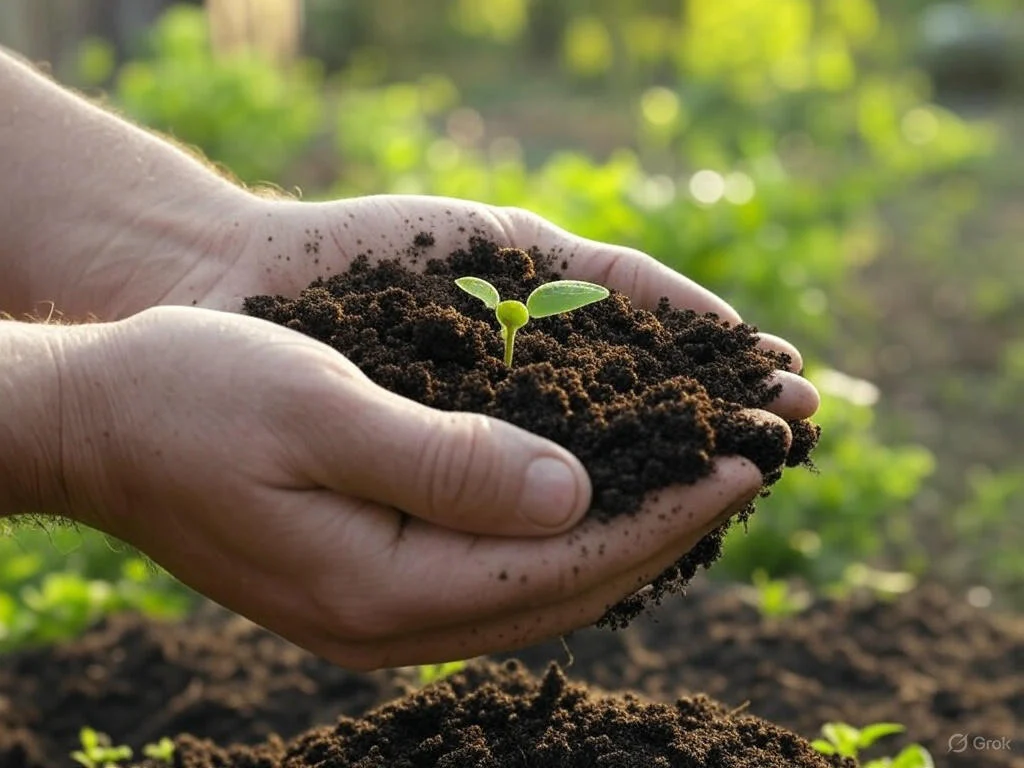Picture this: you’ve spent hours picking out vibrant flowers or dreaming of homegrown tomatoes, but when you plant them, they just… limp along. Sound familiar? The secret to a thriving garden isn’t always in the seeds or the sunlight—it’s in the soil.
Soil isn’t just dirt under your fingernails; it’s a living, breathing foundation that can make or break your gardening dreams. Welcome to SoilCareGuide, where we’re starting with the basics: why soil health matters and how it transforms your garden. Let’s dig in (pun intended) and uncover what’s happening beneath your feet!

What Makes Soil Healthy?
Soil health might sound technical, but it’s simpler than you think. It’s all about balance, and a few key players make it work:
- Organic Matter: Think of this as soil’s pantry—compost, decayed leaves, or manure that feeds plants and tiny soil critters. Without it, your soil starves.
- Soil Structure: This is the mix of sand, silt, and clay that decides how well water and air move through. Sandy soil drains fast (sometimes too fast), while clay holds tight (sometimes too tight). A good loam—a balance of all three—is the sweet spot for most gardens.
- pH Levels: Soil can be acidic, neutral, or alkaline, and plants are picky about it. Most prefer a slightly acidic to neutral range (6.0-7.0 on the pH scale) where nutrients are easiest to grab. Too far off, and your plants might as well be on a diet.
- Microorganisms: Bacteria, fungi, and worms are the unsung heroes. They break down organic matter, recycle nutrients, and keep soil alive. A teaspoon of healthy soil can host billions of these helpers—pretty cool, right?
Imagine soil as a bustling city: organic matter is the food supply, structure is the roads, pH is the zoning laws, and microbes are the workers keeping it all running.
Why Soil Health Matters
So, why fuss over soil when plants seem to grow anyway? Because healthy soil doesn’t just help—it transforms. Here’s how:
- Lush, Strong Plants: Healthy soil delivers water and nutrients like a steady drip, not a flood or famine. Roots dig deeper, leaves turn greener, and you get more blooms or bigger veggies.
- Fewer Pests and Diseases: Well-fed plants are tougher, like an athlete in peak form. They shrug off bugs and blights better, cutting your need for sprays.
- Long-Term Rewards: Good soil sticks around. It resists erosion, holds moisture, and builds fertility over time, so your garden gets better every year—not worse.
- Planet-Friendly Bonus: Healthy soil traps carbon from the air, fights climate change, and keeps runoff from polluting streams. Your garden can be a mini eco-hero!
I’ve seen it myself: a friend’s neglected, compacted soil barely grew weeds, but after a season of care, it sprouted a jungle of flowers. Soil health is the difference between “meh” and “wow.”
How to Spot Unhealthy Soil
Not sure where your soil stands? Look for these red flags:
- Plants stay small or yellow, even with water and sun.
- Water sits on top like a puddle or runs off without soaking in.
- Soil’s hard as a rock when dry, or sticky like glue when wet.
- Barely a worm or bug in sight—life’s missing.
If this sounds like your yard, don’t panic! Soil’s forgiving—it just needs a little TLC, and we’ll get there together.
First Steps to Healthier Soil
Ready to give your soil a boost? You don’t need a science degree—just a few easy moves:
- Add Organic Matter: Toss on some compost, grass clippings (dried first), or shredded leaves. Start small—a thin layer works wonders.
- Test It Out: Grab a DIY soil test kit from a garden store or try a home trick (stay tuned for my next post on simple tests!). Knowing your soil’s pH or texture is half the battle.
- Loosen Up: Skip the heavy tilling, but gently fork in some air if it’s compacted. Worms will thank you.
- Mulch It: Cover bare soil with straw or wood chips to lock in moisture and keep weeds at bay.
Try one this weekend—it’s like giving your garden a spa day. Over time, these habits turn “just dirt” into a powerhouse.
Conclusion: Your Garden’s Best Friend
Soil health isn’t a chore—it’s the key to a garden that thrives with less fuss. Healthy soil means happier plants, fewer headaches, and a little win for the planet. At SoilCareGuide, we’re here to help you master it, step by step. What’s your soil like right now—rock-hard, soggy, or somewhere in between? Share in the comments—I’d love to hear! Subscribe for more tips, and let’s grow something amazing together.
